-
 Bitcoin
Bitcoin $83,681.2500
0.42% -
 Ethereum
Ethereum $1,816.3925
-0.25% -
 Tether USDt
Tether USDt $0.9997
0.02% -
 XRP
XRP $2.1251
3.00% -
 BNB
BNB $596.2965
0.41% -
 Solana
Solana $122.0683
4.38% -
 USDC
USDC $1.0001
0.02% -
 Dogecoin
Dogecoin $0.1704
4.62% -
 Cardano
Cardano $0.6613
1.49% -
 TRON
TRON $0.2388
0.31% -
 Chainlink
Chainlink $12.9421
0.33% -
 UNUS SED LEO
UNUS SED LEO $9.1716
-2.85% -
 Toncoin
Toncoin $3.3936
-4.79% -
 Stellar
Stellar $0.2594
-0.77% -
 Avalanche
Avalanche $18.1419
-0.44% -
 Sui
Sui $2.2409
-0.91% -
 Shiba Inu
Shiba Inu $0.0...01232
0.99% -
 Hedera
Hedera $0.1638
-0.23% -
 Litecoin
Litecoin $84.5108
1.45% -
 Polkadot
Polkadot $4.0325
-0.58% -
 MANTRA
MANTRA $6.2700
-2.60% -
 Bitcoin Cash
Bitcoin Cash $301.8114
0.09% -
 Bitget Token
Bitget Token $4.5258
0.41% -
 Dai
Dai $1.0000
0.01% -
 Ethena USDe
Ethena USDe $0.9991
-0.05% -
 Hyperliquid
Hyperliquid $11.9363
0.54% -
 Monero
Monero $214.7500
-0.58% -
 Uniswap
Uniswap $5.9000
0.13% -
 Pi
Pi $0.5128
-10.32% -
 Pepe
Pepe $0.0...07253
6.41%
How to check the market performance of Trust Wallet tokens?
To evaluate Trust Wallet token performance, use real-time data in the app, analyze trends on CoinGecko/CoinMarketCap, and consider market cap, liquidity, and on-chain metrics.
Apr 03, 2025 at 06:28 am
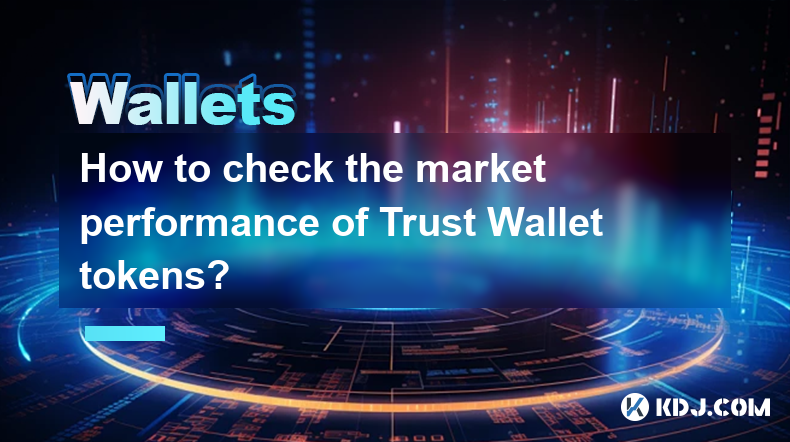
Trust Wallet is a popular cryptocurrency wallet that supports a wide range of tokens. To check the market performance of Trust Wallet tokens, users need to understand the various metrics and tools available. This article will guide you through the process of evaluating the market performance of tokens stored in Trust Wallet, including how to access real-time data, analyze price trends, and use third-party platforms for more detailed insights.
Accessing Real-Time Data in Trust Wallet
Trust Wallet provides basic information about the tokens you hold, such as their current price and 24-hour price change. To access this data, open the Trust Wallet app and navigate to the "Wallet" tab. Here, you will see a list of all your tokens. Each token's card displays its current price and the percentage change over the last 24 hours. This gives you a quick snapshot of how your tokens are performing in the market.
Analyzing Price Trends
While Trust Wallet offers real-time data, it does not provide detailed historical price charts. To analyze price trends, you can use external platforms like CoinGecko or CoinMarketCap. These websites allow you to view detailed charts showing the price history of your tokens over various time frames. For example, you can see how a token has performed over the past week, month, or year. This information is crucial for understanding long-term trends and making informed investment decisions.
Using CoinGecko for Detailed Insights
CoinGecko is a comprehensive platform that provides detailed market data for cryptocurrencies. To use CoinGecko for analyzing Trust Wallet tokens, follow these steps:
- Open the CoinGecko website and search for the token you want to analyze.
- On the token's page, you will find a price chart that you can customize to view different time frames.
- Below the chart, you can see key metrics such as market cap, trading volume, and circulating supply.
- CoinGecko also offers a "Markets" tab where you can see which exchanges the token is listed on and the trading pairs available.
Using CoinMarketCap for Market Performance
CoinMarketCap is another popular platform for checking the market performance of cryptocurrencies. Here's how you can use it to analyze Trust Wallet tokens:
- Visit the CoinMarketCap website and search for the token you are interested in.
- The token's page will display a price chart that you can adjust to view different time periods.
- You can also find information on the token's market cap, trading volume, and historical data.
- CoinMarketCap provides a "Markets" section where you can see the exchanges and trading pairs for the token.
Understanding Market Cap and Trading Volume
Market cap and trading volume are important metrics for evaluating the market performance of tokens. Market cap is the total value of all the tokens in circulation, calculated by multiplying the current price by the total supply. A high market cap often indicates a more established and widely recognized token. Trading volume represents the total amount of the token that has been traded over a specific period, usually 24 hours. High trading volume can indicate strong interest and liquidity in the market.
Evaluating Token Liquidity
Liquidity is a critical factor in the market performance of tokens. A token with high liquidity can be bought and sold easily without significantly affecting its price. To evaluate the liquidity of Trust Wallet tokens, you can look at the trading volume on major exchanges. Platforms like CoinGecko and CoinMarketCap provide this information. Additionally, you can check the order book on specific exchanges to see the depth of the market, which shows the number of buy and sell orders at different price levels.
Using DEXs for Token Performance
Decentralized Exchanges (DEXs) like Uniswap and PancakeSwap are popular platforms for trading tokens, especially those not listed on centralized exchanges. To check the market performance of Trust Wallet tokens on DEXs, follow these steps:
- Open the DEX website and connect your Trust Wallet.
- Search for the token you want to analyze.
- The DEX will show you the current price, trading volume, and liquidity pool information for the token.
- You can also view the token's price chart and historical data on the DEX's platform.
Monitoring Token News and Developments
Staying informed about the latest news and developments related to your tokens is essential for understanding their market performance. Websites like CryptoSlate and CoinDesk provide up-to-date news on various cryptocurrencies. You can also follow the official social media channels and blogs of the tokens you hold to get the latest updates. This information can help you anticipate market movements and make more informed decisions.
Using Portfolio Trackers
Portfolio trackers like Delta and Blockfolio allow you to monitor the performance of all your Trust Wallet tokens in one place. These apps aggregate data from various sources to provide a comprehensive view of your portfolio's performance. To use a portfolio tracker, follow these steps:
- Download and install the portfolio tracker app.
- Add your Trust Wallet tokens to the app by entering their addresses or selecting them from a list.
- The app will display real-time price data, historical charts, and performance metrics for each token.
- You can also set up alerts to notify you of significant price changes or news related to your tokens.
Analyzing Token Fundamentals
Understanding the fundamentals of the tokens you hold is crucial for evaluating their market performance. This includes factors such as the token's use case, the team behind the project, and the technology it uses. Websites like CoinGecko and CoinMarketCap often provide detailed information about a token's fundamentals. You can also visit the token's official website and read its whitepaper to gain a deeper understanding of its potential and risks.
Using Technical Analysis
Technical analysis is a method used to predict future price movements based on historical data. While Trust Wallet does not provide tools for technical analysis, you can use platforms like TradingView to analyze the price charts of your tokens. TradingView offers a wide range of technical indicators and drawing tools that can help you identify trends and patterns. To use technical analysis, follow these steps:
- Open TradingView and search for the token you want to analyze.
- Customize the chart to view different time frames and add technical indicators.
- Use drawing tools to identify support and resistance levels, trend lines, and other patterns.
- Based on your analysis, you can make more informed decisions about buying or selling the token.
Considering Market Sentiment
Market sentiment refers to the overall attitude of investors towards a particular token or the cryptocurrency market as a whole. It can be influenced by news, social media, and other factors. To gauge market sentiment for Trust Wallet tokens, you can use tools like LunarCrush, which analyzes social media data to provide sentiment scores. You can also follow cryptocurrency forums and social media channels to get a sense of how the community feels about the tokens you hold.
Evaluating Token Utility
The utility of a token is another important factor in its market performance. Tokens with strong use cases and real-world applications are often more valuable and stable. To evaluate the utility of Trust Wallet tokens, consider the following:
- What is the token's primary function within its ecosystem?
- Is the token used for transactions, governance, or other purposes?
- How widely is the token adopted and used by its community?
- Are there any upcoming developments or partnerships that could enhance the token's utility?
Using On-Chain Metrics
On-chain metrics provide insights into the activity and health of a token's blockchain. Platforms like Glassnode and CryptoQuant offer detailed on-chain data that can help you evaluate the market performance of Trust Wallet tokens. Key on-chain metrics to consider include:
- Transaction volume: The total number of transactions on the blockchain.
- Active addresses: The number of unique addresses participating in transactions.
- Network growth: The rate at which new addresses are being created.
- Token velocity: The rate at which tokens are being spent and transferred.
Considering Tokenomics
Tokenomics refers to the economic model of a token, including its supply, distribution, and incentives. Understanding the tokenomics of Trust Wallet tokens can help you evaluate their market performance. Key aspects of tokenomics to consider include:
- Total supply: The total number of tokens that will ever exist.
- Circulating supply: The number of tokens currently in circulation.
- Inflation rate: The rate at which new tokens are created and added to the supply.
- Token distribution: How the tokens are distributed among different stakeholders, such as the team, investors, and the community.
Using Social Media and Community Engagement
The level of social media activity and community engagement can also impact the market performance of Trust Wallet tokens. Tokens with active and engaged communities are often more resilient and have better long-term prospects. To gauge the level of community engagement, you can:
- Follow the token's official social media channels, such as Twitter and Telegram.
- Participate in community forums and discussions on platforms like Reddit and Discord.
- Monitor the token's GitHub repository to see the level of development activity.
Considering Regulatory Environment
The regulatory environment can have a significant impact on the market performance of cryptocurrencies. Tokens that are compliant with regulations and have clear legal frameworks are often more attractive to investors. To evaluate the regulatory environment for Trust Wallet tokens, you can:
- Research the regulatory status of the token in different jurisdictions.
- Follow news and updates from regulatory bodies like the SEC and FCA.
- Consider the token's compliance with anti-money laundering (AML) and know-your-customer (KYC) regulations.
Using Sentiment Analysis Tools
Sentiment analysis tools can help you gauge the overall sentiment towards Trust Wallet tokens. These tools analyze data from social media, news articles, and other sources to provide sentiment scores. Some popular sentiment analysis tools for cryptocurrencies include:
- LunarCrush: Provides sentiment scores based on social media data.
- Santiment: Offers on-chain and social media sentiment analysis.
- CryptoQuant: Provides sentiment analysis along with on-chain metrics.
Evaluating Token Partnerships and Collaborations
Partnerships and collaborations can significantly impact the market performance of Trust Wallet tokens. Tokens that have strong partnerships with established companies or other blockchain projects often see increased adoption and value. To evaluate the impact of partnerships on Trust Wallet tokens, you can:
- Follow the token's official announcements and press releases.
- Monitor news and updates from the token's partners.
- Consider the potential benefits and synergies that the partnerships could bring to the token's ecosystem.
Using Market Depth and Order Book Analysis
Market depth and order book analysis can provide insights into the liquidity and potential price movements of Trust Wallet tokens. To analyze the market depth and order book, you can:
- Visit the token's trading page on a major exchange like Binance or Coinbase.
- View the order book to see the number of buy and sell orders at different price levels.
- Analyze the market depth to understand the liquidity and potential price impact of large trades.
Considering Token Listings and Delistings
Token listings and delistings on major exchanges can significantly impact their market performance. When a token is listed on a reputable exchange, it often sees increased trading volume and liquidity. Conversely, delistings can lead to decreased liquidity and price drops. To stay informed about token listings and delistings, you can:
- Follow the official announcements from exchanges.
- Monitor news and updates from cryptocurrency news websites.
- Use tools like CoinGecko and CoinMarketCap to track the exchanges where the token is listed.
Using Historical Data for Long-Term Analysis
Historical data can provide valuable insights into the long-term market performance of Trust Wallet tokens. By analyzing historical price charts and market data, you can identify trends and patterns that can help you make more informed investment decisions. To use historical data for long-term analysis, you can:
- Visit platforms like CoinGecko and CoinMarketCap to view historical price charts.
- Use tools like TradingView to analyze historical data and identify trends.
- Consider the token's performance during different market cycles and economic conditions.
Evaluating Token Security and Audits
The security of a token and the results of its audits can impact its market performance. Tokens that have undergone thorough security audits and have strong security measures in place are often more trusted by investors. To evaluate the security of Trust Wallet tokens, you can:
- Check the token's official website for information on security audits and measures.
- Follow news and updates from reputable security firms and auditors.
- Consider the token's track record and any past security incidents.
Using Risk Management Strategies
Risk management is crucial when evaluating the market performance of Trust Wallet tokens. By implementing risk management strategies, you can protect your investments and minimize potential losses. Some risk management strategies to consider include:
- Diversifying your portfolio to spread risk across different tokens and assets.
- Setting stop-loss orders to automatically sell tokens if their price drops below a certain level.
- Regularly reviewing and rebalancing your portfolio to ensure it aligns with your investment goals and risk tolerance.
Common Questions Related to Checking the Market Performance of Trust Wallet Tokens
Q: How can I access real-time data for my Trust Wallet tokens?
A: You can access real-time data for your Trust Wallet tokens by opening the Trust Wallet app and navigating to the "Wallet" tab. Each token's card will display its current price and the percentage change over the last 24 hours.
Q: What external platforms can I use to analyze the market performance of Trust Wallet tokens?
A: You can use platforms like CoinGecko and CoinMarketCap to analyze the market performance of Trust Wallet tokens. These websites provide detailed price charts, market cap data, trading volume, and other key metrics.
Q: How can I evaluate the liquidity of Trust Wallet tokens?
A: To evaluate the liquidity of Trust Wallet tokens, you can check the trading volume on major exchanges using platforms like CoinGecko and CoinMarketCap. You can also view the order book on specific exchanges to see the depth of the market.
Q: What are some important metrics to consider when evaluating the market performance of Trust Wallet tokens?
A: Important metrics to consider include market cap, trading volume, liquidity, token utility, on-chain metrics, and market sentiment. These metrics can provide insights into the token's value, adoption, and potential for growth.
Q: How can I stay informed about the latest news and developments related to my Trust Wallet tokens?
A: You can stay informed by following cryptocurrency news websites like CryptoSlate and CoinDesk, as well as the official social media channels and blogs of the tokens you hold. Portfolio trackers like Delta and Blockfolio can also provide news alerts.
Q: What role does technical analysis play in evaluating the market performance of Trust Wallet tokens?
A: Technical analysis can help you predict future price movements based on historical data. Platforms like TradingView offer tools for technical analysis, allowing you to identify trends and patterns that can inform your investment decisions.
Q: How can I use on-chain metrics to evaluate the market performance of Trust Wallet tokens?
A: On-chain metrics like transaction volume, active addresses, network growth, and token velocity can provide insights into the activity and health of a token's blockchain. Platforms like Glassnode and CryptoQuant offer detailed on-chain data for analysis.
Q: What are some risk management strategies I can use when investing in Trust Wallet tokens?
A: Risk management strategies include diversifying your portfolio, setting stop-loss orders, and regularly reviewing and rebalancing your portfolio. These strategies can help you protect your investments and minimize potential losses.
Disclaimer:info@kdj.com
The information provided is not trading advice. kdj.com does not assume any responsibility for any investments made based on the information provided in this article. Cryptocurrencies are highly volatile and it is highly recommended that you invest with caution after thorough research!
If you believe that the content used on this website infringes your copyright, please contact us immediately (info@kdj.com) and we will delete it promptly.
- Ripple (XRP) Targets $5 in 5 Weeks.
- 2025-04-05 08:30:12
- Hamster Kombat Becomes a Huge Hit in the Crypto Gaming World
- 2025-04-05 08:30:12
- TOY CHAIN has partnered with the AWS Generative AI Innovation Center to build TAIX
- 2025-04-05 08:25:12
- Institutional Investors Questioning the Growing Correlation Between Bitcoin and Tech Stocks
- 2025-04-05 08:25:12
- BitMEX Founder Arthur Hayes Predicts Bitcoin (BTC) Will Resist Selling Pressure and Hold $76.5k Until the US Tax Deadline
- 2025-04-05 08:20:12
- Cryptocurrency Whale Deposits 71448 Solana (SOL) Worth $8.55 Million into Binance
- 2025-04-05 08:20:12
Related knowledge

How do I contact Rabby Wallet support?
Apr 04,2025 at 08:42am
Introduction to Rabby Wallet SupportIf you are a user of Rabby Wallet and need assistance, knowing how to contact their support team is crucial. Rabby Wallet offers various methods to reach out for help, ensuring that users can get the support they need efficiently. This article will guide you through the different ways to contact Rabby Wallet support, ...
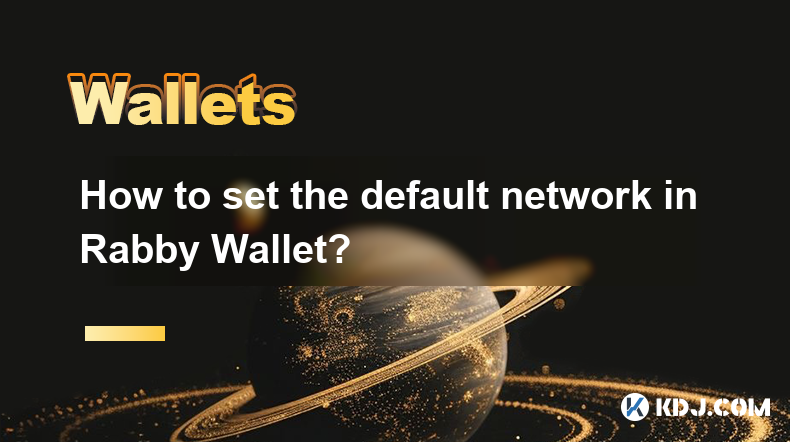
How to set the default network in Rabby Wallet?
Apr 04,2025 at 06:35am
Setting the default network in Rabby Wallet is a crucial step for users who frequently interact with different blockchain networks. This guide will walk you through the process of setting your preferred network as the default, ensuring a seamless experience when managing your cryptocurrencies. Whether you're using Ethereum, Binance Smart Chain, or any o...
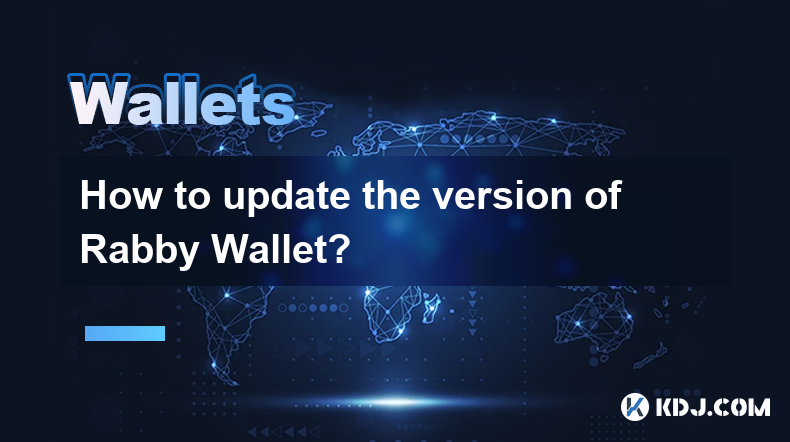
How to update the version of Rabby Wallet?
Apr 05,2025 at 02:14am
Updating the version of Rabby Wallet is an essential task to ensure you have the latest features, security enhancements, and bug fixes. This guide will walk you through the process of updating Rabby Wallet on different platforms, including desktop and mobile devices. Let's dive into the detailed steps for each platform. Updating Rabby Wallet on DesktopU...
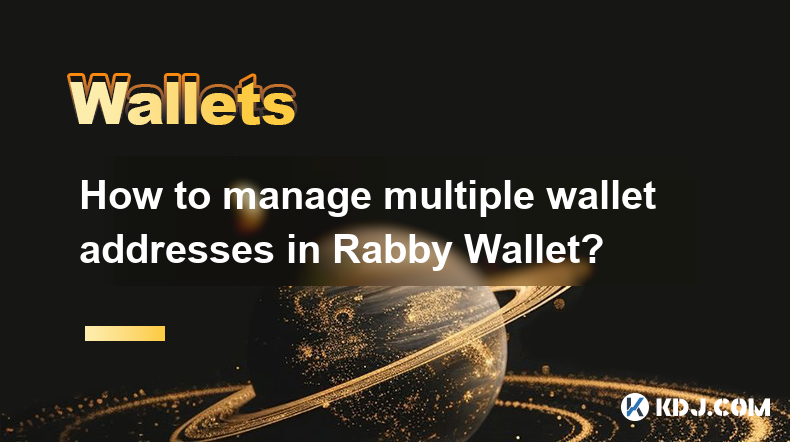
How to manage multiple wallet addresses in Rabby Wallet?
Apr 05,2025 at 07:14am
Managing multiple wallet addresses in Rabby Wallet can significantly enhance your cryptocurrency management experience. Whether you're a seasoned crypto enthusiast or a beginner, understanding how to efficiently handle multiple addresses can streamline your transactions and improve your security. In this article, we will explore the detailed steps and b...
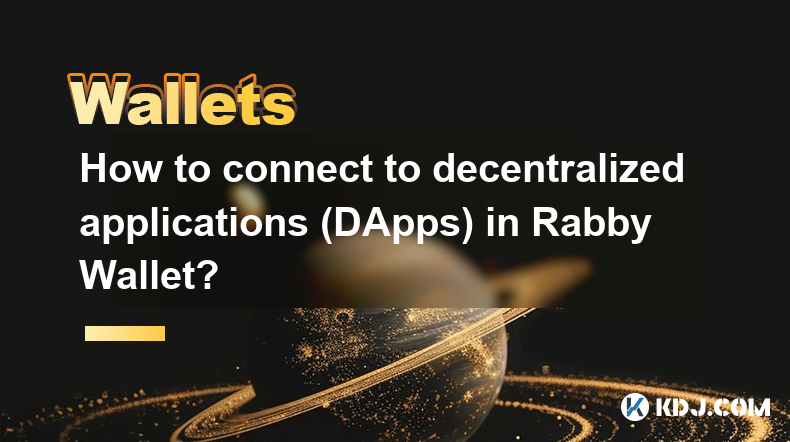
How to connect to decentralized applications (DApps) in Rabby Wallet?
Apr 05,2025 at 01:28am
Connecting to decentralized applications (DApps) using Rabby Wallet is a straightforward process that enhances your interaction with the burgeoning world of blockchain technology. Rabby Wallet, known for its user-friendly interface and robust security features, allows users to seamlessly interact with a variety of DApps across different blockchains. Thi...
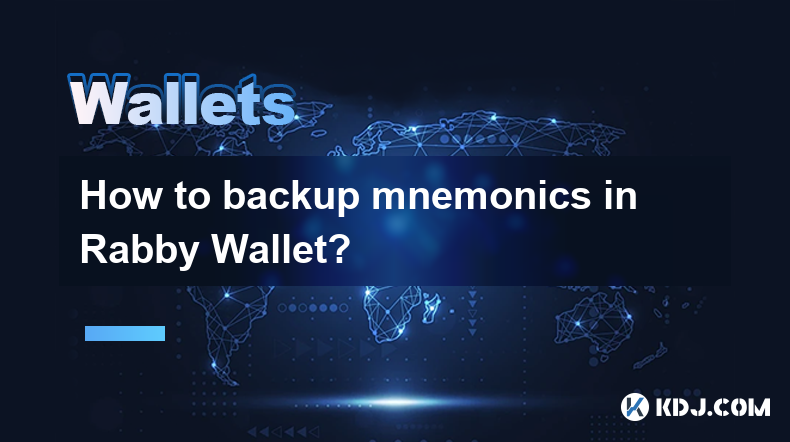
How to backup mnemonics in Rabby Wallet?
Apr 04,2025 at 02:21pm
Introduction to Rabby Wallet and MnemonicsRabby Wallet is a popular cryptocurrency wallet that offers users a secure way to manage their digital assets. One of the key features of Rabby Wallet is the use of mnemonics, which are a series of words that serve as a backup for your wallet. These mnemonics are crucial because they allow you to recover your wa...

How do I contact Rabby Wallet support?
Apr 04,2025 at 08:42am
Introduction to Rabby Wallet SupportIf you are a user of Rabby Wallet and need assistance, knowing how to contact their support team is crucial. Rabby Wallet offers various methods to reach out for help, ensuring that users can get the support they need efficiently. This article will guide you through the different ways to contact Rabby Wallet support, ...

How to set the default network in Rabby Wallet?
Apr 04,2025 at 06:35am
Setting the default network in Rabby Wallet is a crucial step for users who frequently interact with different blockchain networks. This guide will walk you through the process of setting your preferred network as the default, ensuring a seamless experience when managing your cryptocurrencies. Whether you're using Ethereum, Binance Smart Chain, or any o...

How to update the version of Rabby Wallet?
Apr 05,2025 at 02:14am
Updating the version of Rabby Wallet is an essential task to ensure you have the latest features, security enhancements, and bug fixes. This guide will walk you through the process of updating Rabby Wallet on different platforms, including desktop and mobile devices. Let's dive into the detailed steps for each platform. Updating Rabby Wallet on DesktopU...

How to manage multiple wallet addresses in Rabby Wallet?
Apr 05,2025 at 07:14am
Managing multiple wallet addresses in Rabby Wallet can significantly enhance your cryptocurrency management experience. Whether you're a seasoned crypto enthusiast or a beginner, understanding how to efficiently handle multiple addresses can streamline your transactions and improve your security. In this article, we will explore the detailed steps and b...

How to connect to decentralized applications (DApps) in Rabby Wallet?
Apr 05,2025 at 01:28am
Connecting to decentralized applications (DApps) using Rabby Wallet is a straightforward process that enhances your interaction with the burgeoning world of blockchain technology. Rabby Wallet, known for its user-friendly interface and robust security features, allows users to seamlessly interact with a variety of DApps across different blockchains. Thi...

How to backup mnemonics in Rabby Wallet?
Apr 04,2025 at 02:21pm
Introduction to Rabby Wallet and MnemonicsRabby Wallet is a popular cryptocurrency wallet that offers users a secure way to manage their digital assets. One of the key features of Rabby Wallet is the use of mnemonics, which are a series of words that serve as a backup for your wallet. These mnemonics are crucial because they allow you to recover your wa...
See all articles





















































































